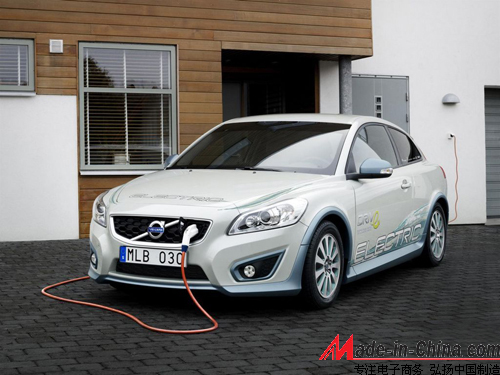A telescopic Forklift, also called a telehandler, teleporter, reach forklift or zoom boom, is a machine widely used in agriculture and industry. It is somewhat like a forklift but has a boom (telescopic cylinder), making it more a crane than a forklift, with the increased versatility of a single telescopic that can extend forwards and upwards from the vehicle. The boom can be fitted with different attachments, such as a bucket, pallet forks, muck grab, or winch.
WINGS manufacture various forklift including Rough Terrain Forklift, LOG & Gasoline Forklift, Explosion-proof Diesel Forklift, Explosion-proof Battery Forklift, Narrow Aisle Forklift and a wide range of warehouse equipments.
Telehandler Forklift, Telescopic Forklift, Forklift with Telescopic Boom,reach forklift,zoom boom Shandong Wings Heavy Machinery Co.,Ltd , https://www.forkliftwings.com The much-anticipated “Standard Outline for Pure Electric Vehicles†has now been submitted to the National Standards Committee and is expected to be introduced before the end of the year.
The much-anticipated “Standard Outline for Pure Electric Vehicles†has now been submitted to the National Standards Committee and is expected to be introduced before the end of the year.
The so-called pure electric vehicle refers to an electric vehicle that is completely powered by a power battery. Since the beginning of this year, sales of domestic self-owned brands have become the only opportunities and hopes for Chinese automobiles to surpass the world's advanced level. With the advancement of technology and the expansion of sales volume, the cost of pure electric vehicles will drop significantly, even lower than traditional cars. Coupled with the encouragement of national policies, more and more self-owned brand car companies have turned their attention to the design and development of pure electric vehicles.
It is true that China’s auto industry is big but not strong. The key reason is the lack of core technologies, especially the electronic control of the powertrain. Chinese enterprises have long been behind foreign companies and it is difficult to catch up. Due to the backwardness of technology, Chinese companies need to purchase core components from foreign companies, resulting in a large loss of profits. To change this situation, we must find another way.
In the electronic control of electric vehicles, foreign companies have just started, and China is not far from foreign companies. The engine needs to control combustion, heat, and emissions. The battery is electrochemically controlled and the control of the motor is simple. In addition, the automatic transmission of an internal combustion engine needs more than 9 gears, and the gearbox of an electric vehicle only needs 3 gears. Therefore, there is a possibility of a breakthrough in the electronic control of electric vehicles in China.
As early as last year, some local governments were enthusiastic about building infrastructure such as charging stations for electric vehicles. But at the time, it also encountered a series of problems: Some pure electric vehicles use “plug-in typeâ€, and they need to find a socket to recharge after power is exhausted; some pure electric vehicles need to use DC piles for charging; while others need AC charging. Pile ... ... even the battery specifications of various automotive manufacturers are different, including the charging interface is not the same, because the standard is not uniform, charging facilities around can only be their own battle.
In the “Outline†of this time, regarding the relevant standards for the charging of pure electric vehicles, relevant parties in the country have been hoping to move closer to internationalization. Based on research carried out around the charging mechanism of electric vehicles around the world, the International Electrotechnical Commission will formulate a unified international standard and make regulations for various power infrastructures in various countries, avoiding the global incompatibility of pure electric vehicle business in different regions. risks of.
This shows that the battery problem of pure electric vehicles is particularly important. Where is the difficulty in the world now? Batteries must have hundreds of unipolar batteries in groups to supply electric vehicles. Hundreds of batteries are too difficult to manage together. First, the consistency of the quality of the battery itself is demanding; second, the technical level of the group is very demanding, such as requiring cooling technology to follow up in time; and third, the level of systematic management and control is not acceptable. At present, as long as one battery is broken, the entire battery will not work. Frequent charging and discharging are also more likely to reduce battery life. So someone began to think boldly: why must the energy be stored in the car? If energy is not required to be placed in a vehicle, like a tram or EMU, power is taken from the line or from an external facility, and the demand for on-board power will be greatly reduced. This may be the ultimate outlet for electric vehicles. At present, car companies have developed a wireless charging technology that can achieve a distance of about one meter, 95% of the transmission effect, and it is very fast. The super capacitor is full for a few seconds. One car passes through this coil and two coils. As soon as you close it, you can complete the charge. There are several lines and a charging line on the road. If you see that your own power is gone, go to the top and charge it. The cost of a line charging system is much lower than that of a charging station, so this will also be the best way to charge an electric vehicle. In the near future, perhaps it will replace the existence of a charging station.
How far the idea is, how far the road goes. With the rapid development of science and technology, the impossibility of the past will become possible. Pure electric vehicles, as a new industry, despite the thorny road ahead, the future is bright.
Development status of pure electric vehicles